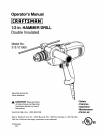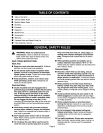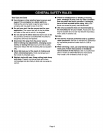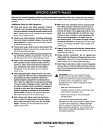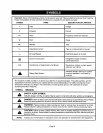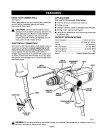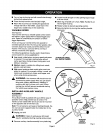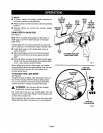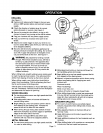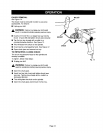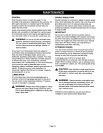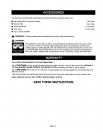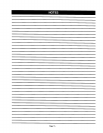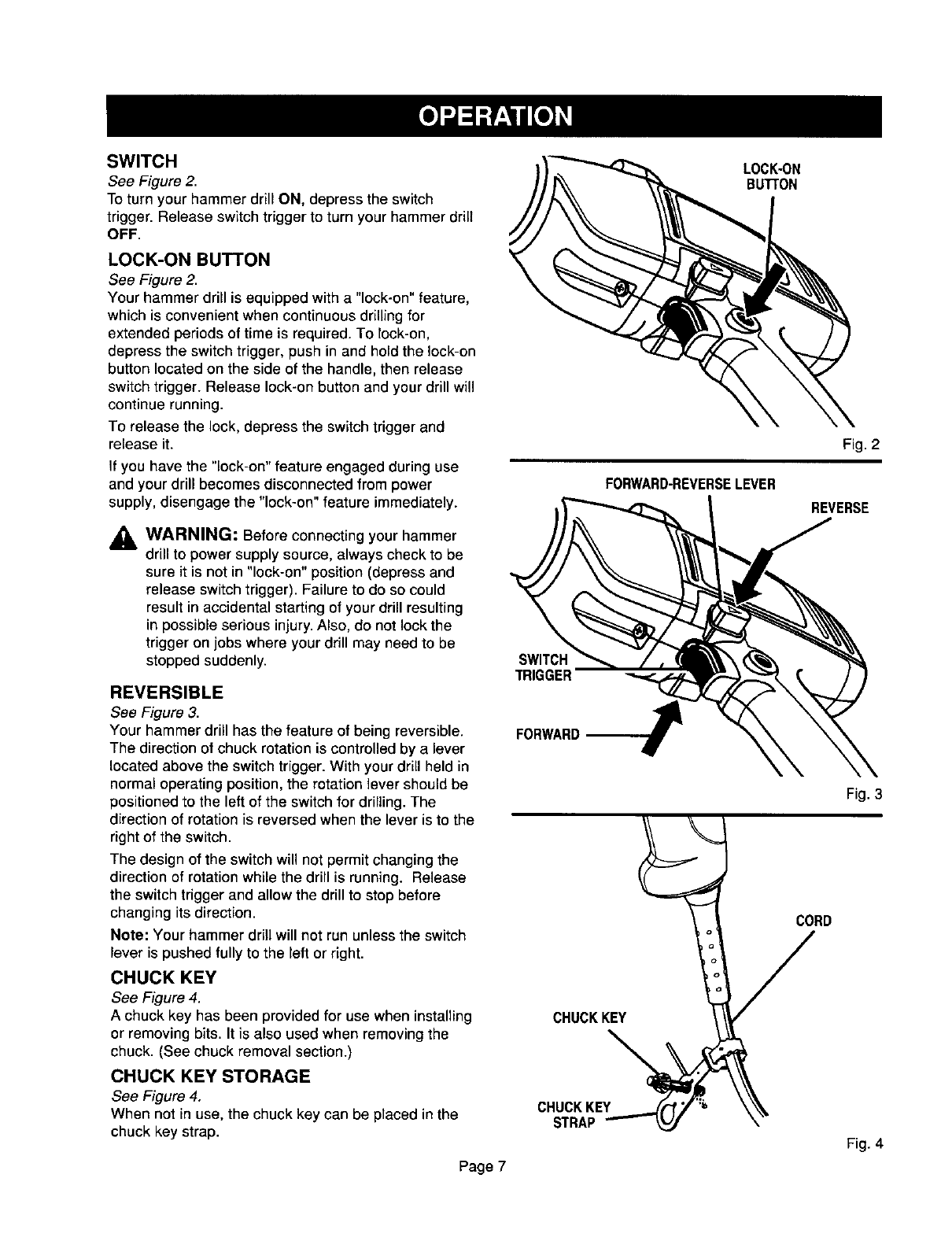
SWITCH
See Figure 2.
Toturn your hammer drill ON, depress the switch
trigger. Release switch trigger to turn your hammer drill
OFF.
LOCK-ON BUTTON
See Figure 2.
Your hammer drill is equipped with a "lock-on" feature,
whichis convenientwhen continuousdrillingfor
extended periodsof time is required.To lock-on,
depress the switchtrigger, push in and holdthe lock-on
button locatedon the side ofthe handle,then release
switch trigger. Release lock-onbutton and yourdrillwill
continue running.
To release the lock, depressthe switchtriggerand
release it.
if you have the "lock-on" feature engaged during use
and your drill becomes disconnected from power
supply, disengage the "lock-on" feature immediately.
_L WARNING: Before connecting hammer
your
drill topower supply source, always check to be
sure it is not in "lock-on" position (depress and
release switch trigger). Failure to do so could
result in accidental starting of your drill resulting
in possible serious injury. Also, do not lock the
trigger on jobs where your drill may need to be
stopped suddenly.
REVERSIBLE
See Figure 3.
Your hammer drillhas the feature of being reversible.
The directionof chuck rotationis controlledbya lever
located above the switch trigger.With yourdrillheldin
normaloperating position,the rotationlever should be
positioned to the left ofthe switch for drilling.The
directionof rotationis reversed when the lever isto the
rightofthe switch.
The design of the switch will not permit changing the
direction of rotation while the drill is running. Release
the switch trigger and allow the drill to stop before
changing its direction.
Note: Your hammer drill will not run unless the switch
lever is pushed fully to the left or right.
CHUCK KEY
See Figure4.
A chuck key has been provided for use when installing
or removing bits. It is also used when removing the
chuck. (See chuck removal section.)
CHUCK KEY STORAGE
See Figure 4.
When not in use, the chuck key can be placed inthe
chuck key strap,
LOCK-ON
BU'I-I'ON
FORWARD-REVERSELEVER
Fig. 2
REVERSE
SWITCH
TRIGGER
FORWARD
Fig. 3
Fig. 4
Page 7



